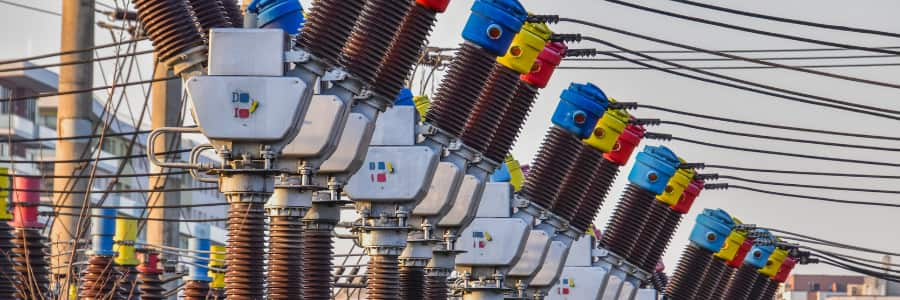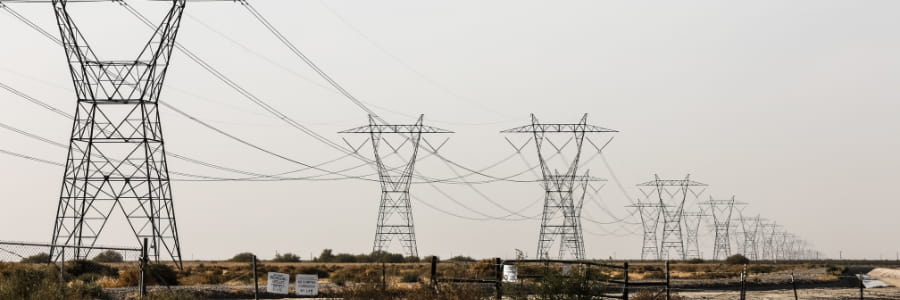As extreme weather events become more frequent and severe, utilities must rethink their approach to grid resilience. Traditional grid infrastructure, built for a more predictable energy landscape, is struggling to adapt to increasing climate hazards, shifting demand patterns, and the rise of decentralized energy resources.
Grid resilience challenges were front and centre in February 2021, when Texas faced one of the most severe grid failures in recent U.S. history. Low temperatures caused the state’s isolated electricity network to collapse, leaving millions without power for days. The crisis highlighted the fundamental weakness traditional grid infrastructures have to increasingly common extreme weather events.
As a result, the risk of U.S. power outages is growing, as legacy systems’ rigid, centralized setups struggle to adapt to extreme weather, fluctuating renewable generation, and shifting demand patterns.
These issue are top of mind for utility leaders who see climate-related disasters and aging infrastructure as central issues challenging energy resilience.
This is by no means only a U.S. phenomenon, with extreme weather events increasing globally by 83%.
For utilities, the evolving weather risks require upgrades to grid resilience. It is no longer just about maintaining capacity; it requires real-time flexibility, distributed energy coordination, and intelligent demand-side management.
This is where Distributed Energy Resource Management Systems (DERMS) play a transformative role. By integrating and optimizing Distributed Energy Resources (DERs), these systems enable grid operators to balance supply and demand dynamically. Electric vehicles (EVs) add another critical layer of flexibility, charging in ways that help shift loads and regulate the frequency in the grid.

New England and New York provide a microcosm of evolving energy demand and grid resilience needs. Peak electricity loads are expected to move from summer to winter as heating systems electrify and solar generation drops during colder months.
New York is expected to transition to a winter-peaking grid by 2036, driven largely by the electrification of building heating and EV charging. Similarly, New England’s grid operator projects that by 2033, summer and winter peaks will be nearly equal.
Meanwhile, climate hazards to grid operations are becoming more severe and unpredictable. New York and New England are experiencing more frequent extreme cold snaps, heavy snowfall, and intense storms, increasing the risk of electricity outages.
Across the U.S., different regions face distinct challenges—heat waves in the South, wildfires in the West, and hurricanes along the East Coast—all of which threaten electric grid resilience.
Globally, utilities face similar situations. Rising temperatures, stronger storms, and more volatile weather patterns are straining grid infrastructure, heightening the need for greater grid stability.

One consequence for utilities and energy companies is that electric grid resilience frameworks must evolve.
As summarised by Aditya Ranade, Guidehouse director of energy, sustainability, and infrastructure:
“The utility industry is shifting from responding to an individual event to mapping vulnerability to financial risk and quantifying benefits of potential investments.”
Crucial vectors include mapping potential hazards, assessing asset vulnerabilities, charting financial risks and deciding on adaptation measures.
While no two utilities or energy companies face the same situation or risks, the frameworks provide a structured approach to identifying optimal energy risk management and mitigation strategies.
One area that seems to be crucial to the ability to expand resilience is investments in infrastructure.
However, integrating software solutions could provide a cost-effective and faster alternative—or at least complement—to massive construction projects.

One of the most critical systems when updating risk management is Advanced Metering Infrastructure (AMI). Combined with smart meters, AMI transforms metering into a real-time, multi-sensor data network to precisely monitor grid performance, even during extreme weather events.
During storms or heat waves, AMI can help pinpoint vulnerabilities in real-time, reducing response times and limiting electricity outages. When combined with grid edge intelligence, smart meters also facilitate demand response strategies, encouraging consumers to shift energy use away from peak periods.
Beyond smart metering, the integration of Distributed Energy Resource Management Systems (DERMS), Distributed Energy Resources (DERs), and electric vehicles (EVs) is redefining how utilities respond to extreme weather events.
DERMS provide real-time orchestration of DERs—including rooftop solar, battery storage, and microgrids—supporting efficient energy distribution if weather events compromise centralized power plants or other parts of the energy distribution network.
Advanced smart charging enables EVs to play a similarly active role in grid support. These abilities are set to be supercharged as Vehicle-to-grid (V2G) technology evolves. Once V2G becomes widespread, utilities will have access to fleets of EVs that can function as mobile energy assets, feeding stored power back into the grid during emergencies.

With extreme weather events becoming more frequent and severe, utilities are shifting their resilience strategies to account for long-term climate risks.
Infrastructure decisions made today—whether in grid hardening, asset placement, or new technology deployment—will shape grid reliability for decades, as most utility assets have a lifespan of 40 to 50 years. That means utilities must anticipate how climate patterns will evolve over time, assessing risks such as higher wind speeds, heavier precipitation, and rising temperatures when designing and reinforcing their networks.
This also means that evolving trends, such as the growth of EVs and DERs, must be central pillars in any grid resilience framework and strategy.
Utilities across the U.S. are embracing grid modernization to improve their ability to withstand extreme weather.
Duke Energy, which serves Florida and the Carolinas, is implementing advanced self-healing technology to detect and isolate faults when outages occur, automatically restoring power. As part of its multi-year grid improvement strategy, Duke spent over $4 billion in 2023 on grid hardening and modernization and plans to invest $75 billion over the next decade to further strengthen infrastructure.
Meanwhile, Central Hudson Gas & Electric has developed a vulnerability study and resilience plan in compliance with New York regulations, which is now under regulatory review.
As climate risks grow, utilities worldwide are recognizing the need to go beyond traditional grid hardening and incorporate innovative, distributed solutions into their resilience planning. The convergence of DERMS, EVs and DERs transforms how utilities can prepare for the future, ensuring energy grids remain reliable, adaptable, and ready for future challenges.